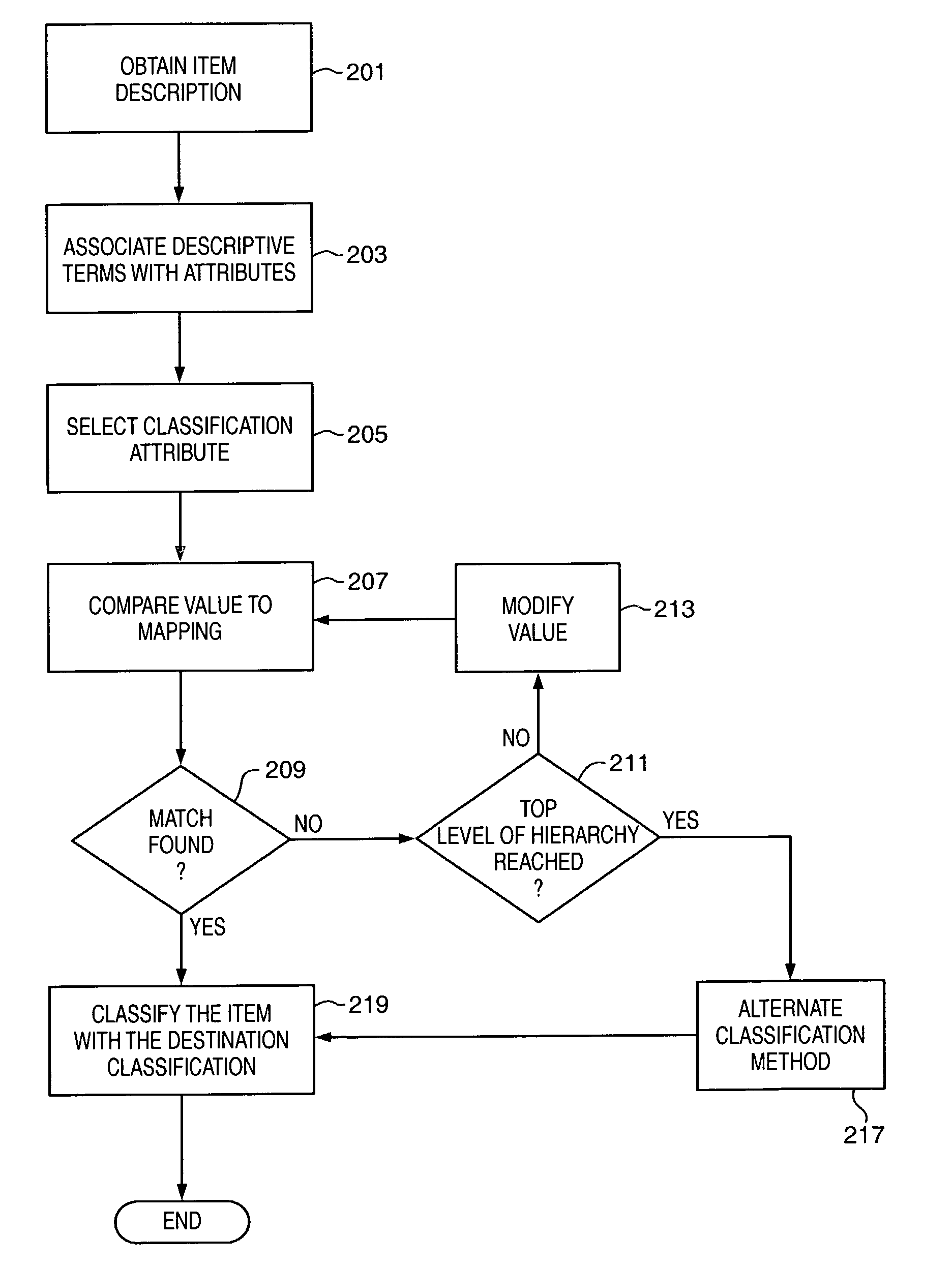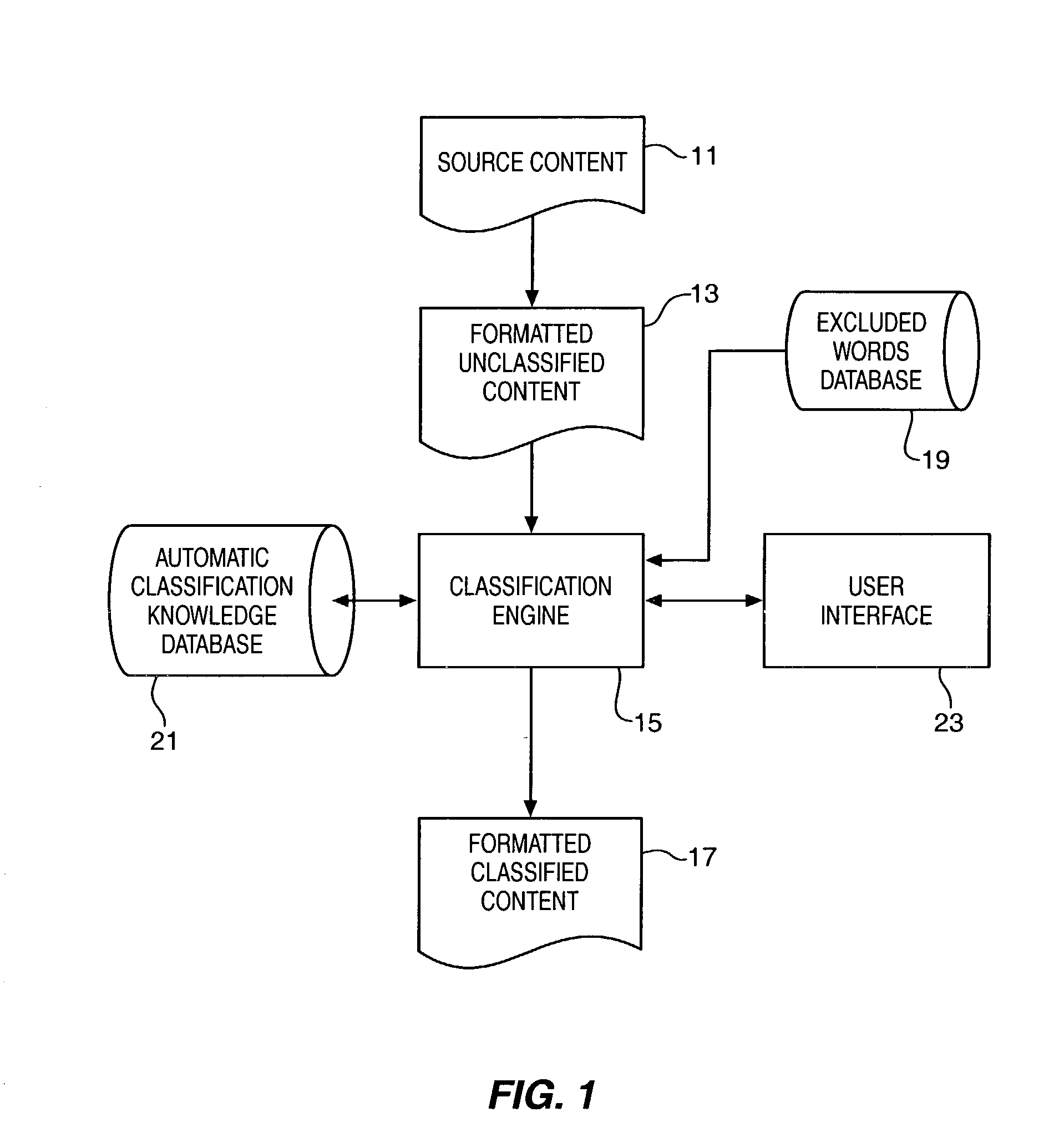Automated classification of items using classification mappings
a technology of item classification and item data, applied in the field of automatic item classification, can solve the problems of time-consuming and expensive process of manually classifying a large catalog of new items, difficult to find items and compare different items, and insufficient precision and accuracy required in grouping similar documents together
- Summary
- Abstract
- Description
- Claims
- Application Information
AI Technical Summary
Problems solved by technology
Method used
Image
Examples
Embodiment Construction
[0017]The present invention can be broadly considered in terms of three basic elements. The first element is to develop or use an existing classification system that is to be applied to the object that is to be classified. The second element is to develop or use an existing electronic database of objects classified using the desired classification system and then to process this database into one or more electronic knowledge databases. The existing electronic database can be developed or added to as items are classified. This electronic knowledge database finds and positively weights words, tokens or symbols that are commonly associated with items in a given classification. It also finds and negatively weights words or symbols that are frequently associated with items across a proportionately large number of classifications. The third element is to classify the new items by comparing the words and symbols associated with each item to those in the knowledge database. The developed or...
PUM
 Login to View More
Login to View More Abstract
Description
Claims
Application Information
 Login to View More
Login to View More - R&D
- Intellectual Property
- Life Sciences
- Materials
- Tech Scout
- Unparalleled Data Quality
- Higher Quality Content
- 60% Fewer Hallucinations
Browse by: Latest US Patents, China's latest patents, Technical Efficacy Thesaurus, Application Domain, Technology Topic, Popular Technical Reports.
© 2025 PatSnap. All rights reserved.Legal|Privacy policy|Modern Slavery Act Transparency Statement|Sitemap|About US| Contact US: help@patsnap.com



